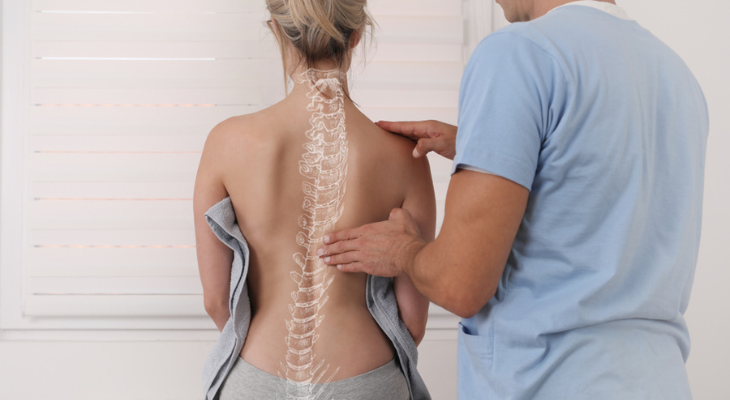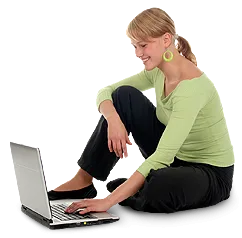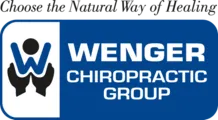March Newsletter: How Chiropractic Helps Patients with Scoliosis
- Created in Newsletter Library

How Chiropractic Helps Patients With Scoliosis
Managing scoliosis can be challenging whether you're an adult or a teenager. Adding chiropractic to your treatment regimen offers a natural way to relieve pain and improve comfort.
Are You Struggling With Any Of These Scoliosis Symptoms?
Normally, the vertebrae that make up your spine form a straight line down your back when viewed from behind. When you have scoliosis, your spine may look like an "S" or "C" instead. The abnormal curvatures may strain or irritate your muscles, bones, spinal discs, tendons, ligaments, and nerves, causing a variety of symptoms, including:
- Pain in Your Back, Shoulders, Ribs, Hips, or Neck
- Sciatica (pain that travels from your lower back to your buttocks and legs)
- Sore Muscles
- Numbness in Your Arms, Hands, Legs, or Feet
- Chronic Headaches
- Muscle Weakness
- Posture Changes
- Trouble Breathing (scoliosis can decrease space in your rib cage and make it difficult for your lungs to expand fully when breathing. This usually only happens in severe cases.)
Scoliosis can also affect the way clothing fits or looks if one shoulder or hip becomes higher than the other.
Improving Your Condition With Chiropractic
Chiropractic treatment helps reduce the strain on your spine and tissues and decreases pain. Spinal adjustments, a treatment chiropractors use to correct misaligned vertebrae, improve joint mobility and ease tension on muscles, tendons, ligaments, and nerves. Quick thrusts with the hands or a handheld activator move vertebrae back into the proper alignment during a spinal manipulation treatment.
Spinal adjustments can also make breathing a little easier if scoliosis affects the thoracic vertebrae in your mid to upper back. When these vertebrae are correctly aligned, your lungs may have more room to expand.
If you have a rod implanted in your spine, you can still take advantage of the benefits of spinal manipulation. If that's the case, your chiropractor may choose to use an activator rather than hands-on thrusts to avoid jarring your spine.
Other treatments chiropractors use to help people manage their scoliosis include:
- Heat and Ice. Heat soothes and loosens tight, painful tissues, while ice reduces pain and inflammation.
- Massage. Massage relieves muscle and soft tissue pain by stretching and relieving tension on tissues. During massage therapy, your body increases its production of serotonin, dopamine, and endorphins. These hormones ease pain and help you feel calm and relaxed. Massage can be very helpful if you suffer from muscle spasms or frequent headaches due to scoliosis.
- Soft Tissue Treatments. Your chiropractor may also use other soft tissue treatments in addition to massage, such as soft tissue mobilization or myofascial release to ease pain and soothe trigger points.
- Transcutaneous Electrical Nerve Stimulation (TENS). TENS treatment uses a safe, gentle electrical pulse to relieve pain and relax your muscles. The treatment interferes with pain signals, preventing them from reaching the brain.
- Ultrasound. Ultrasound waves warm your deep tissues, reduce inflammation, improve blood circulation, relax tight tissues, and break apart scar tissue.
- Stretches. During your appointment, your chiropractor may show you a few stretches that will help keep your joints and tissues flexible. You'll also learn exercises that will strengthen the muscles that support your joints, core, and spine.
Chiropractic treatments may even help reduce the curvature of the spine, as evidenced by a case series in the Open Journal of Therapy and Rehabilitation. The case series explored the results of chiropractic treatment for a mother and her two teenage daughters over the course of nine years. Although the mother and the daughters could have qualified for scoliosis surgery, they elected to try chiropractic treatment instead.
After nine years of treatment, all experienced a decrease in their Cobb angles by at least six degrees. (The Cobb angle is used to measure the degree of curvature in the spine.) They also had less pain and were better able to carry out their usual activities. Although more research is needed into the effects of chiropractic on scoliosis, the treatment might offer some improvement for mild to moderate cases of scoliosis.
Need help dealing with scoliosis symptoms? Call our office to schedule your appointment.
Sources:
Scientific Research: Open Journal of Therapy and Rehabilitation: Chiropractic Rehabilitation of a Scoliosis Family: Results from a 9-Year Follow-Up, 2/2017
https://www.scirp.org/journal/paperinformation.aspx?paperid=73851
National Institute of Arthritis and Musculoskeletal and Skin Diseases: Scoliosis in Children and Teens
https://www.niams.nih.gov/health-topics/scoliosis
Spine Universe: Scoliosis Causes, Symptoms, Diagnosis and Treatment, Oct 31, 2022
https://www.spineuniverse.com/conditions/scoliosis
Spine Universe: Chiropractic Treatments, 3/15/2019
https://www.spineuniverse.com/treatments/chiropractic/chiropractic-therapies
Health Resources

The following resources have been assembled to provide you with more chiropractic wellness care information available on the internet.

American Chiropractic Association
www.amerchiro.org
Palmer University
www.palmer.edu
Foundation for Chiropractic and Education Research
www.fcer.org
Children’s Chiropractic Research Foundation
www.icpa4kids.org
Journal for Vertebral Subluxation Research
www.jvsr.com
International Chiropractors Association
www.chiropractic.org
Chiropractic Resource Organization
www.chiro.org
Chiropractic Online Today
www.chiro-online.com
Chiroweb.com
www.chiroweb.com
World Federation of Chiropractic
www.wfc.org
The Association of Chiropractic Colleges
www.chirocolleges.org
World Chiropractic Alliance
www.worldchiropracticalliance.org
Today’s Chiropractic Magazine
www.todayschiropractic.com
National University of Health Sciences
www.nuhs.edu
Life College of Chiropractic
www.life.edu
New York College of Chiropractic
www.nycc.edu
